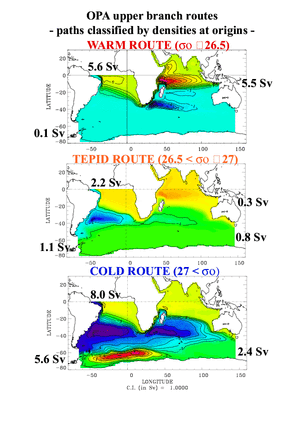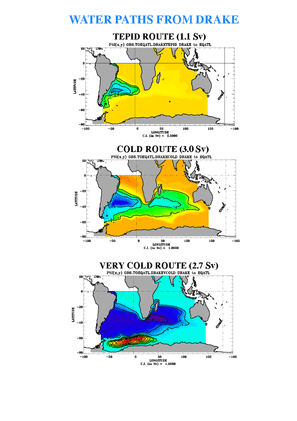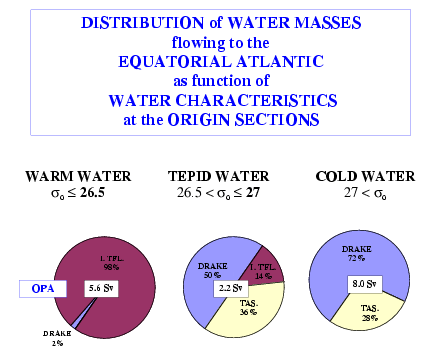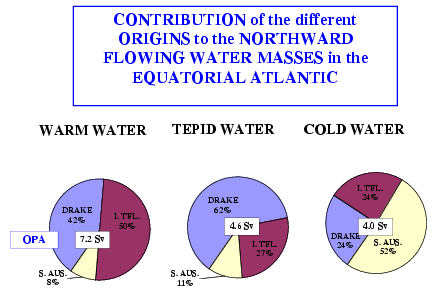|
WARM WATERS Waters flowing to EAQTL that are warm at the initial sections abound essentially at ITFL. Therefore, the classical identification of Warm Route with the Indonesian Passage holds for the ORCA-OPA results. This path represents 35% of the Upper Branch flow. TEPID WATERS enter the Indo-Atlantic domain at all three initial sections, with almost equivalent amounts from DRAKE and TAS. This route accounts for 14% of the return flow.COLD WATERS . Unlike classical hypotheses, the ORCA simulation shows that the Cold Water Route arises not only from DRAKE but also from TAS, even if the DRAKE contribution is the largest (5.6 Sv against 2.4 Sv). Nevertheless, it has to be noted here that we grouped in the Cold class also waters that are denser than 27.6. In fact, the ORCA simulation gives a contribution of 3 Sv of Intermediate waters and 2.6 of denser waters (i.e., s > 27.6; cf. figure below).
|
 Warm, Cold and Tepid Routes >>
Comparison with other GCMs >>
A17 Comparison
Warm, Cold and Tepid Routes >>
Comparison with other GCMs >>
A17 Comparison









